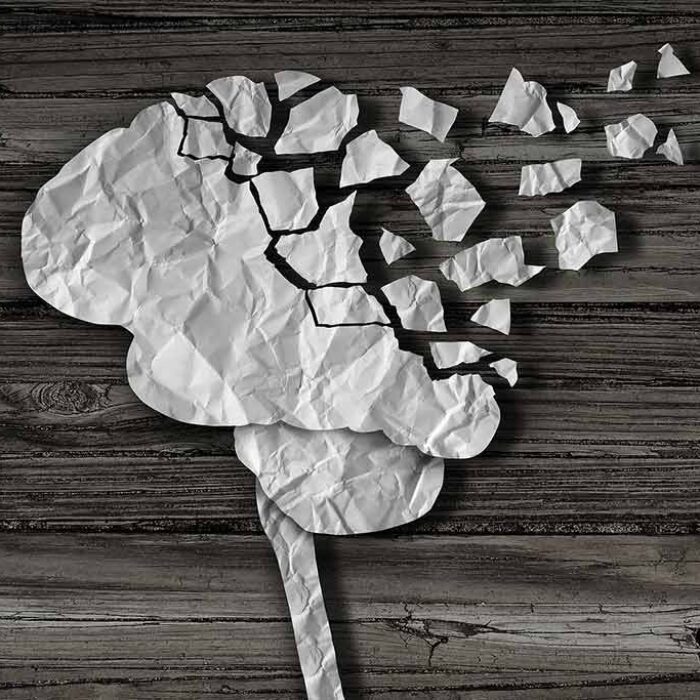Relationship between Opioid Abuse and Mental Illness
The beginning of opioid abuse can be so innocuous. An individual sustains an injury, has surgery, or falls ill with a condition that can cause intense pain. A doctor provides a prescription for an opioid pain reliever, like Vicodin, Percocet, or any one of a host of available painkillers. The prescribed opioid takes care of the pain. In general, patients taking opioids for a short-term condition will discontinue their use once the condition improves. However, for some people, that is not the end of the story.
For some individuals, the acquired relief of emotional pain has become an unexpected benefit, difficult to surrender. Thus, someone suffering from a depressive disorder or other forms of emotional distress, especially after a physically painful incident (but not only then), may simply continue to take the prescribed opioid to address the mental health issues that are not being properly treated or properly diagnosed. We call this “self-medicating.”
Stigmatizing Individuals Dealing With Mental Illness
Most societies, the U.S. included, stigmatize individuals dealing with mental illness. For instance, people with a history of psychiatric hospitalizations, people who take psychotropic medications, see a therapist on a regular basis or use any mental health/wellness services.
As a result, most people think of using mental health services as a public admission that they’re “crazy” and tend to see it as a last resort or do not seek help at all. Unfortunately, professionals often don’t explore medications and treatments that can improve mental health and quality of life with minimal negative side effects. Sadly, the consequences caused by the lack of professional help can be detrimental and painful.
Self-medication and Emotional Comfort
The stigma of mental illness or the stigma of addiction puts an individual between a rock and a hard place. Self-medication (coined in the 1970s by Edward Khantzian, M.D.) describes an individual who uses alcohol or drugs to relieve physical or psychological distress without the appropriate professional assistance. For example. an individual with an anxiety disorder or someone dealing with depression may start abusing alcohol or drugs simply to achieve emotional comfort.
Opioids are widely used as a self-medicating drug because they bind to the receptors and function as an analgesic. They also reduce the perception and tolerance of pain, which makes them even more attractive. Opioids, when used as intended, provide physical pain relief with a level of safety and accessibility unprecedented in human history. However, the downside occurs when people use opioids against medical recommendations. “…scientific insight must strike the right balance between providing maximum relief from suffering while minimizing associated risks and adverse effects.” – National Institute on Drug Abuse (NIDA).
Effect on How the Brain Works
Opioids, however, are also implicated in having an effect on how the brain works. “…Using opioids, or even withdrawal from opioids, might precipitate anxiety disorders, suggesting that there is a subgroup of people who are vulnerable to future development of anxiety disorders,” said Carla Storr, Sc.D., author of the [Johns Hopkins Bloomberg School of Public Health] study.
Addiction is created in vulnerable individuals after a continuous intake of the substance causes tolerance and physical dependence. Also, it often occurs in a desperate attempt to escape emotional pain. Dual diagnosis refers to individuals who have dependence and mental health issues occurring together. Which came first is a chicken-or-egg question, the answer to which is mostly moot in the real world. The opioid addiction/mental health issue has often involved two basic scenarios:
1. Pain, then addiction, then mental illness caused by the opioid addiction.
2. Mental illness, then opioid addiction (with or without physical pain in the mix) as a way to self-medicate.
In every instance, the physical dependence component has to be addressed first. Otherwise, there is no way to properly assess the level of depression, anxiety, or other mental health components, caused by the chemical changes created by the drug abuse or by the mental health issue.
Key to Effective Treatment for Opioid Abuse and Mental Illness
We conclude with the realization that drug abuse can cause individuals to diminish or heighten symptoms of mental illness and mental illness can lead individuals to drug abuse as a form of self-medication. Human beings are complex and a proper individualized assessment that includes genetic vulnerabilities, social environment, brain function deficits, stress, and trauma could be the key to an effective and successful course of treatment.
Source
Associations of Nonmedical Pain Reliever Use and Initiation of Heroin Use in the United States. SAMHSA. Retrieved J, SAMHSA. Retrieved on 06/20/2016.
America’s Addiction to Opioids: Heroin and Prescription Drug Abuse, NIH. Retrieved on 06/20/2016.
CDC Statistics: Mental Illness in the US, Psych Central. Retrieved on 06/20/2016.
Mood Disorders Up Risk of Opioid Abuse, Psych Central. Retrieved on 06/20/2016.














